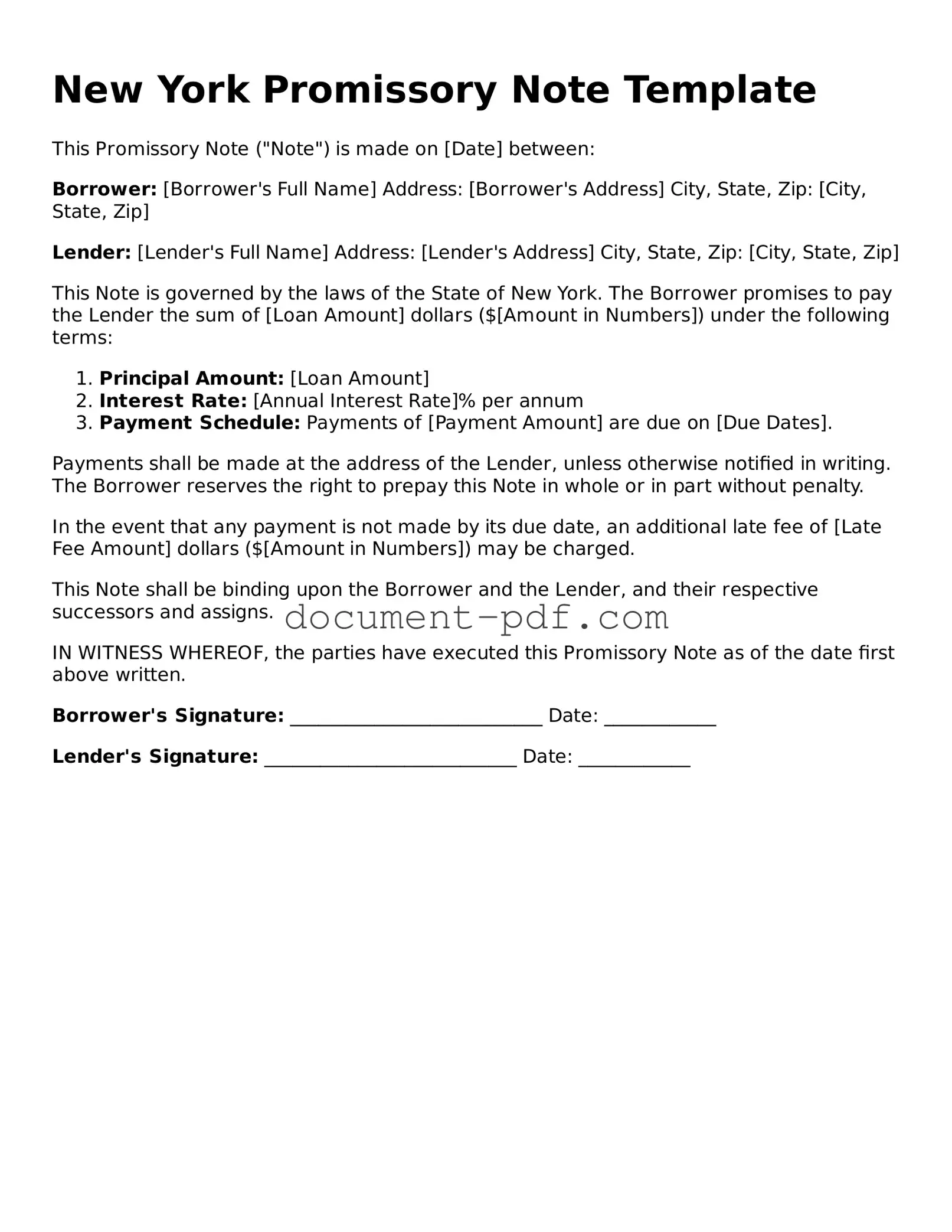The New York Promissory Note shares similarities with a Loan Agreement, which outlines the terms under which a borrower receives funds from a lender. Like a promissory note, a loan agreement specifies the amount borrowed, interest rates, and repayment schedules. However, a loan agreement often includes additional clauses that address the responsibilities of both parties, such as collateral requirements and default conditions. This document tends to be more comprehensive, providing a broader framework for the lending relationship.
In the context of financial planning and legal documentation, the importance of understanding various agreements cannot be overstated, especially when it comes to durable power of attorney. This form can play a critical role in managing financial decisions for individuals. For those interested in preparing this essential document, resources such as Texas PDF Templates can provide valuable assistance in navigating the complexities of legal forms.
Another document comparable to a New York Promissory Note is a Mortgage. While a promissory note represents the borrower's promise to repay a loan, a mortgage serves as a security instrument that allows the lender to claim the property if the borrower defaults. Both documents work together in real estate transactions, with the promissory note detailing the loan terms and the mortgage securing the lender's interest in the property. This duality helps protect both parties in the agreement.
A Credit Agreement is also similar in nature to a promissory note. This document typically governs the terms of borrowing between a lender and a borrower, detailing the credit limit, interest rates, and repayment terms. Like a promissory note, it binds the borrower to repay the borrowed funds. However, a credit agreement may cover revolving credit, allowing borrowers to draw from a credit line repeatedly, unlike the fixed amounts often associated with promissory notes.
In addition, a Secured Note shares key characteristics with a New York Promissory Note. A secured note is backed by collateral, which means that if the borrower fails to repay, the lender can seize the collateral to recover their losses. This adds an extra layer of security for the lender, similar to how a mortgage secures a loan with real estate. Both documents outline the borrower's repayment obligations but differ in the presence of collateral.
A Personal Guarantee can also be likened to a promissory note, especially in business transactions. This document involves a third party who agrees to be responsible for the debt if the primary borrower defaults. While a promissory note is a direct promise to pay, a personal guarantee adds a layer of assurance for lenders, as it provides an additional party who can be held accountable for the debt, thereby enhancing the lender's security.
The concept of an IOU, or "I owe you," is a simpler form of acknowledgment of debt that resembles a promissory note. An IOU typically states the amount owed but lacks the detailed terms found in a formal promissory note, such as interest rates or repayment schedules. Despite its informal nature, an IOU still serves as a written acknowledgment of a debt, establishing the borrower's obligation to repay.
Lastly, a Conditional Sales Agreement can be compared to a New York Promissory Note, particularly in transactions involving the sale of goods. This document allows a buyer to take possession of goods while making payments over time. Similar to a promissory note, it outlines the payment terms and conditions but also specifies that ownership of the goods remains with the seller until the full purchase price is paid. This creates a unique relationship between buyer and seller, with both parties having specific rights and obligations until the transaction is complete.
